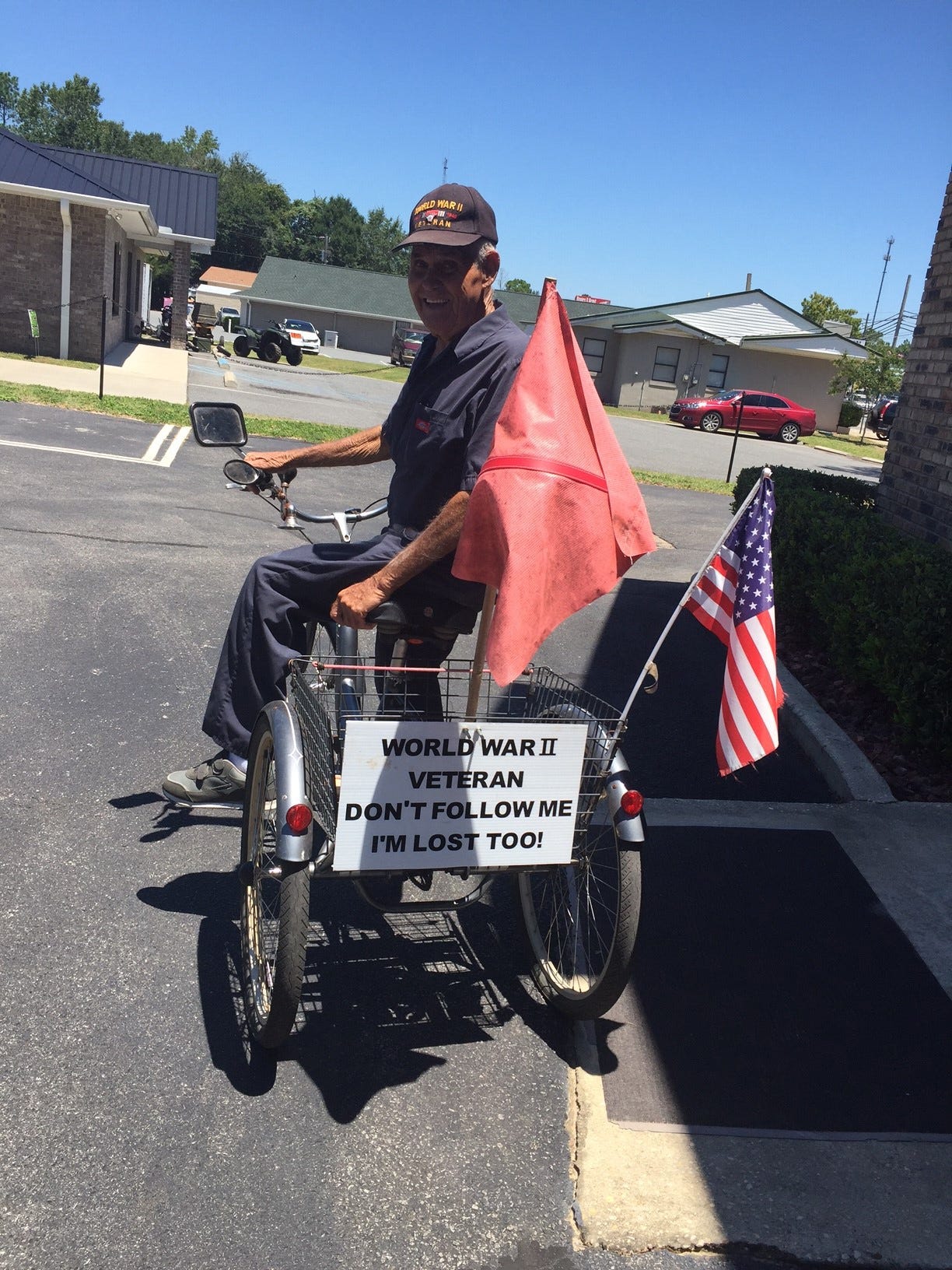![“Some people say the Battle of Midway was the turning point in the war, but I disagree on that,” WWII veteran DeLeon Ward said. [GENEVIEVE DiNATALE | NEWS BULLETIN]](http://127.0.0.1/wordpress/wp-content/uploads/2022/01/ghows-DA-55cf5c20-2234-0ec8-e053-0100007fc7fd-c1f55a86.jpeg)
CRESTVIEW — Crestview resident DeLeon Ward is one of roughly 500,000 World War II veterans still alive, according to data from the U.S. Department of Veterans Affairs.
In 1942, Ward, then 17, was a Seaman 1st Class, or E-3, stationed on the U.S.S. Yorktown. The aircraft carrier was christened by Eleanor Roosevelt on April 4, 1936 and was commissioned by the U.S. Navy until it sank during the Battle of Midway in June 1942.
“Some people say the Battle of Midway was the turning point in the war, but I disagree on that,” Ward said.
The battle took place June 4-7, 1942, about six months after the bombing of Pearl Harbor, which led to the United States’ entry into the war. A number of historians state that the Battle of Midway was a decisive win for the U.S. because the Navy managed to destroy four Japanese aircraft carriers that the country couldn’t adequately replace.
The Crestview veteran sees things differently.
THE A-BOMB FACTOR
“Roosevelt was president,” Ward said. “We had been in war now for two years — ’41-’43 — but in ’42 we stayed in war for another three years, the war wasn’t over until 1945. Then President Roosevelt died and Harry Truman took over and he dropped the atomic bomb on Japan and that’s what stopped the war; that’s what changed the war…”
But Tom Hone — an executive in the Office of the Secretary of Defense — wrote in a Sept. 12, 2013, article on warontherocks.com that “[Japan’s fleet commander Adm. Isoroku] Yamamoto wanted his carriers, led by Vice Admiral Chuichi Nagumo, to ambush any American carriers and surface ships that ventured to contest the Japanese attack and assault on Midway.
“Instead, he was ambushed by the three U.S. carriers — Yorktown, Enterprise, and Hornet — that had steamed north and west from Hawaii. In just one day — 4 June 1942 — Admiral Nagumo lost his four carriers to the air units of his American opponents, while U.S. naval forces lost only one carrier (Yorktown) in return,” Hone wrote.
“Why was Midway such a critical victory? First, the fact that the U.S. Navy lost just one carrier at Midway meant that four carriers (Enterprise, Hornet, Saratoga, and Wasp) were available when the U.S. Navy went on the offensive during the Guadalcanal campaign that began the first week of August 1942. Second, the march of the Imperial Japanese Navy across the Pacific was halted at Midway and never restarted.”
FIRST-HAND ACCOUNT
During the Battle of Midway, Ward’s primary task was transporting ammunition throughout the ship. “We had four gun turrets on it and we had one five-inch gun in each turret. Then we had .50 caliber machine guns,” he said. “I was on gun turret four on the port side and I was moving ammunition to that turret and there were other guys moving ammunition to the others.”
Today, the 93-year-old does not exemplify Shakespeare’s famous quote, “Sans teeth, sans eyes, sans taste, sans everything.” He has stayed in shape and rides a three-wheeled bicycle through the streets of Crestview with an American flag and a sign attached to a metal basket on back that says, “World War II Veteran — Don’t Follow Me, I’m lost too.”
And he still remembers what happened when the U.S.S. Yorktown was torpedoed.
“A Japanese pilot spotted us and radioed an aircraft carrier and he dropped two torpedoes and one of them hit the Yorktown on the port side — and that’s when we abandoned ship. And then we went back and they pushed all the guns off port side and pushed all the airplanes that couldn’t fly overboard and then they tied up the ship on the starboard side to give us power,” he said.
“They pushed all the guns off and the weight off of it so it would settle up again straight. We got it back on its own keel and it was on its own power, and this was on July 2, 1942. Everyone said the Battle of Midway was on the second, but it was on the fourth; but on the sixth, it was back on its keel and it was level.
"A Japanese sub came up and floated some torpedoes on the starboard side and the other torpedoes hit and it sunk. When it sunk, the depth charges [weapons] were set to go off at a certain depth … and they went off.
“And it took it 24 hours after then to sink.”
Editor's note: an earlier version of this article incorrectly identified a turret.

This article originally appeared on Crestview News Bulletin: Reflecting on the Battle of Midway
